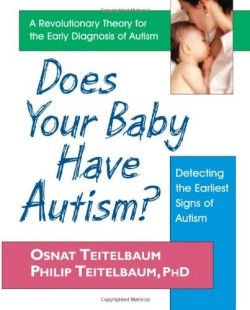Does Your Baby Have Autism?
Detecting the Earliest Signs of Autism
One child in 150 is diagnosed with autism. Many parents report being concerned that their children may be affected when they are still infants, and yet most doctors insist that a diagnosis cannot be made before the age of two.
Osnat Teitelbaum has been studying and teaching movement analysis for more than thirty years. She studied under Professor Noa Eshkol who developed the Eshkol-Wachman Movement Notation (EWMN) with a colleague. “Using it, one can observe movement patterns, write them down, and read them,” the authors write in the preface. Osnat and her husband, Philip, examined videotapes of infants who were later diagnosed with autism and compared the movements of these babies with the movements of non-autistic infants. Philip, who earned his doctorate in physiological psychology from Johns Hopkins, was able to use his own background in physiology to understand each motion.
In these videos, often taken from birthday parties or special occasions, the researchers found a consistent pattern of movements that differed from the infants not ultimately diagnosed with autism. They include asymmetrical movements (favoring one side, inability to make joints cross the body’s center line), the lack of certain reflexes that should be present in all newborns, and problems righting (rolling from back to stomach). These behaviors can help parents identify the signs of autism in their child before it is possible to observe the verbal and social clues that doctors look for in toddlers.
The authors discuss therapies that parents can use to encourage normal development if they see the signs of autism in their infant. The “Seeking Help” chapter includes information about organizations and therapies that can provide assistance.
Although the Teitelbaums’ findings and other early diagnosis methods have gone largely unreported in the medical and scientific community, this book will prove a valuable resource for parents who suspect there is something wrong with their baby and have nowhere else to turn.
“Typically parents are told to turn these matters over to a profession,” Co-Founder of Cure Autism Now Portia Iversen writes in the foreword, “even though, as the Teitelbaums so accurately state, no one knows a child better than his or her parent.”
Reviewed by
Whitney Hallberg
Disclosure: This article is not an endorsement, but a review. The publisher of this book provided free copies of the book to have their book reviewed by a professional reviewer. No fee was paid by the publisher for this review. Foreword Reviews only recommends books that we love. Foreword Magazine, Inc. is disclosing this in accordance with the Federal Trade Commission’s 16 CFR, Part 255.

